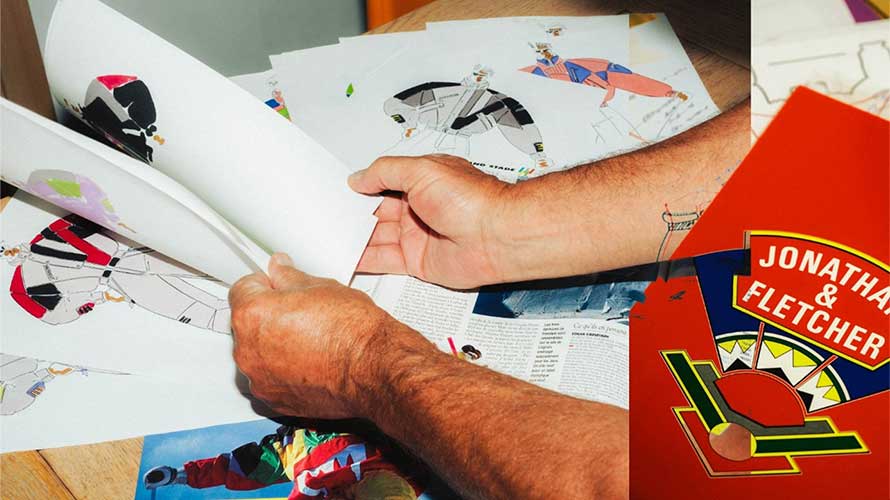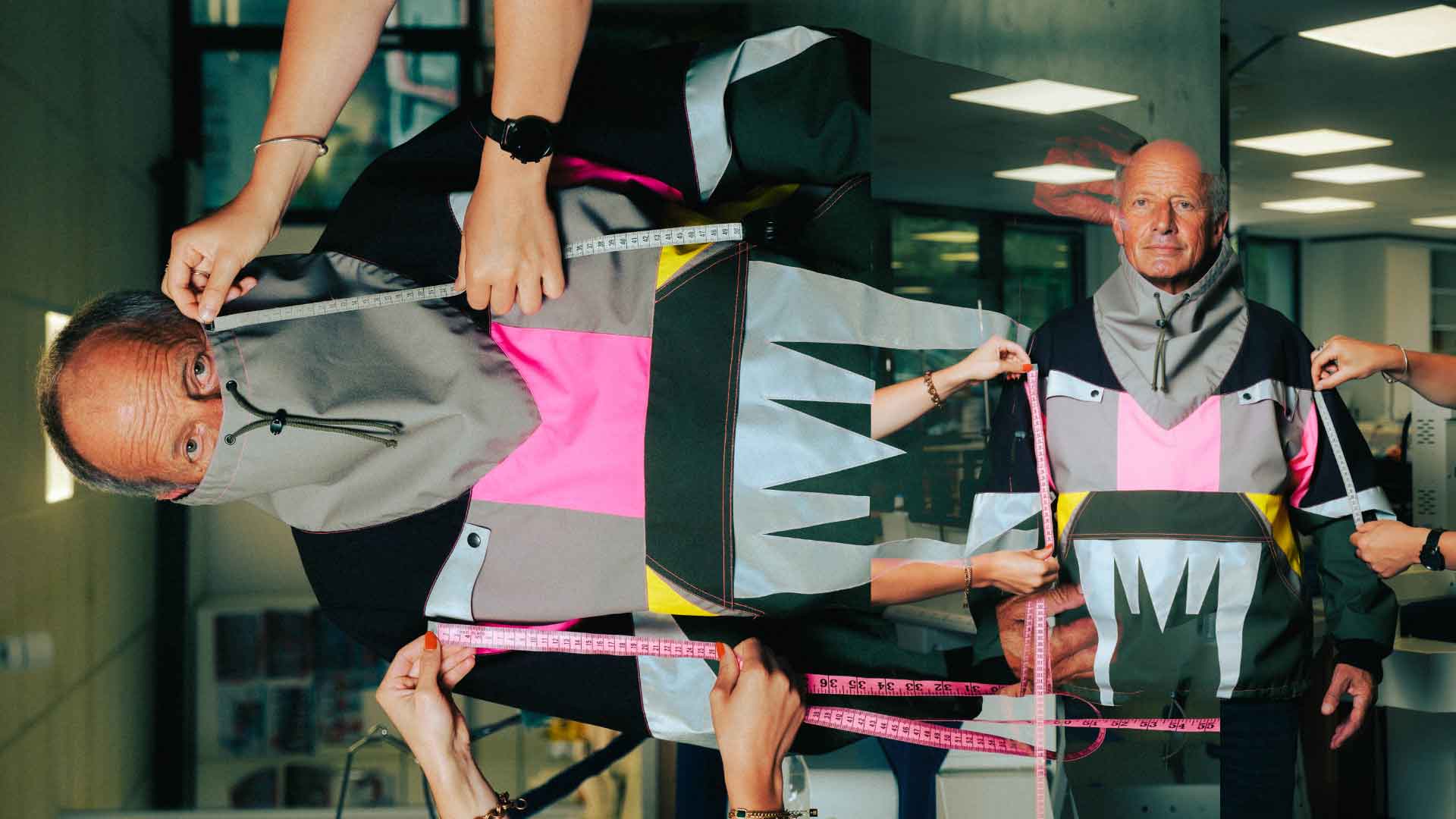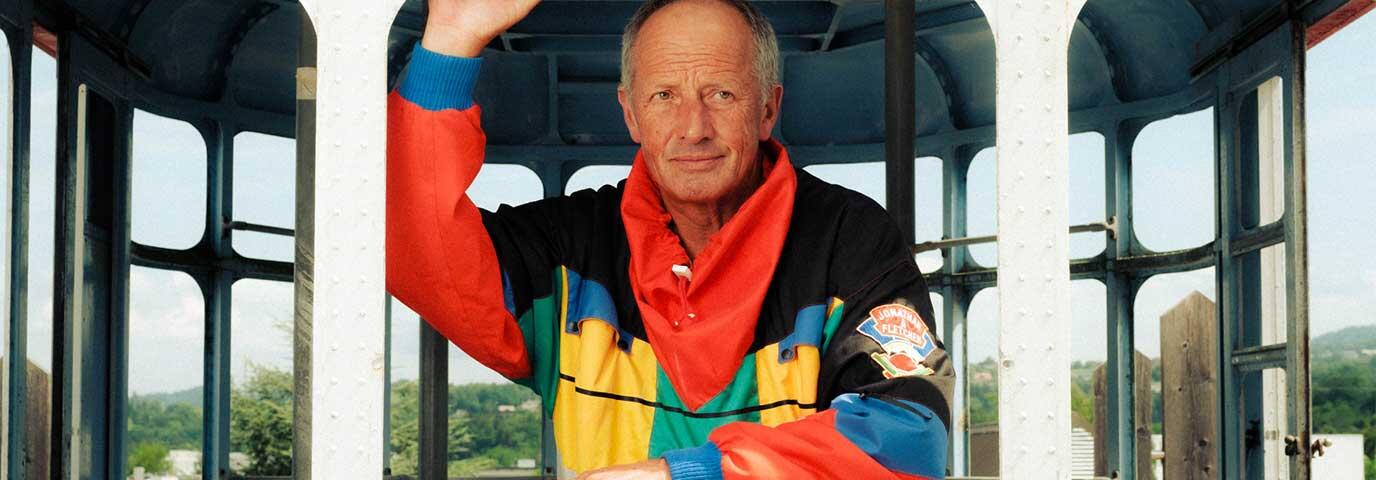This is the fabulous story of an ambitious seagull that decided to fly off on its own and make its dream come true. Georges Pessey, founder of the Jonathan & Fletcher brand, opened his book to tell us the story.
Georges, thank you for inviting us to your fiefdom, as you call it, to talk about your story. So to begin with, what is the story of the Seagull?
The story of the Seagull is a little bit my own. When I was young, I came across a film directed by Hall Bartlett adapted from the novel by Richard Bach “Jonathan Livingston Seagull” and it changed my life, to such an extent that a few years later, the company I set up in 1984 was named after the main characters.

Chapter 1: A future laid down in advance
I was born in La Clusaz, the oldest of seven children. My parents were farmers. At that time, with a name like Pessey my future was already laid down in advance, I’d be a farmer, a craftsman or ski instructor. But I had other projects in mind, like becoming an architect. I have always enjoyed drawing, being creative, using my imagination. The studies were too long to become an architect, so I finally learned the trade of a locksmith. Very early on, I started working at Pollet-Villard, a local company, where I installed very straight guardrails on balconies or wood shingles on roofs in the valley. In winter, I taught cross-country skiing in Les Confins, which led to me meeting a lot of people, especially Americans who came to spend a few days’ holiday in La Clusaz. I was so curious to find out what life was like over there that one fine day, I decided to drop everything and go and live the “American dream”.
Chapter 2: Off to America
I was 20 years old, I didn’t know what I would find or do over there. I bought an open ticket for Los Angeles, which cost 500 francs at the time. Then I set off with my things to meet up with a friend I had known in La Clusaz, and who was living in San Diego in southern California. In the winter, I decided to go to Squaw Valley, a ski resort in California, to find a job. I went to the skiing school with no qualifications as an Alpine ski instructor. By sheer cheek, I took the tests and passed them all easily. But my English was very poor, so I had to negotiate with the director, who wasn’t sure about hiring me, by telling him that I would learn to speak English.
At that time, in the United States, the only way of living and working there was by getting a Green Card. But to get the card, you had to get married. I was determined to go on with my dream, so I placed an ad saying that I wanted to get married. One day, a ski instructor I had worked with, who also wanted to travel, answered my ad. I asked if she’d agree to an arranged marriage in exchange for a plane ticket and accommodation in La Clusaz. She said yes, and so we organised this famous wedding! So, my American trip was underway and I had a Green Card. I went back to La Clusaz to see my family, to catch up on the news and to let them know that I would be settling in the US. Two years later, with my associate, who I had bought a surfing shop with, I decided to sell the shop and go and live in Torx, a very promising town in Australia.
Chapter 3: Back to his roots
Before settling in Australia, I stopped off in La Clusaz. There I met Gisèle, my wife, who became the mother of my two sons, Gregory and Jonathan. This wonderful encounter made me take a new direction. I decided to stay in La Clusaz and settle there. With the help of my experience in California, I tried to import a brand of ski jacket from the United States called Snow. Although I knew nothing about the world of textiles, I got hold of some samples and began to go around sports shops, showing them my collection. I really liked the textile sector, so I set off for Taiwan to visit the production plants and to understand how clothes are made.

Chapter 4: The encounter
This was when I began to design my own collections, with the distinctive nuance of combining different materials on the same piece. One day, a friend said to me: “Why do you bother making your own clothes, you’re a creative and talented person, you should go and see the clothes brands and sell them your designs. ”
My first client was the K-way brand. I had to design the collection for the French skiing team. Then I started to get one project after another as a freelancer for brands such as Fusalp. That’s where I met Alain Marchand, who was a freelance model-maker, like me and was working for them. We worked well together, I designed the collections, he brought them to life.
Chapter 5: Jonathan Livingstone & Fletcher Lynd
In 1984, we decided to set up Jonathan & Fletcher. It was a design studio working with brands to create feasible collections. The partnership with Alain was very productive. More and more big brands, such as Millet, Adidas, Salomon and Patagonia, asked us to design their collections. In 1988, Alain wanted to do something else, so I took over the company alone, and later passed it on to my sons, Jonathan and Gregory Pessey. Since then, we have been designing tailor-made technical clothes for professionals and competition.
Chapter 5: Avalanche Sharks
I’d designed quite an original piece that we wanted to make with remnants of materials. Once we’d made the jacket, I lent it to Christian Haase, a photographer friend, so he could take photos he had arranged to do with Cathy Breton, the first woman to go faster than 200 km/h in speed skiing. One of the photos was published in a well-known magazine, La Neige (“The Snow”) and it went viral. We were received a lot of requests from people who wanted to buy the jacket. So due to the demand, we launched a limited edition of 100 articles. The articles were numbered from 1 to 100, and people hurried to reserve their favourite number…





